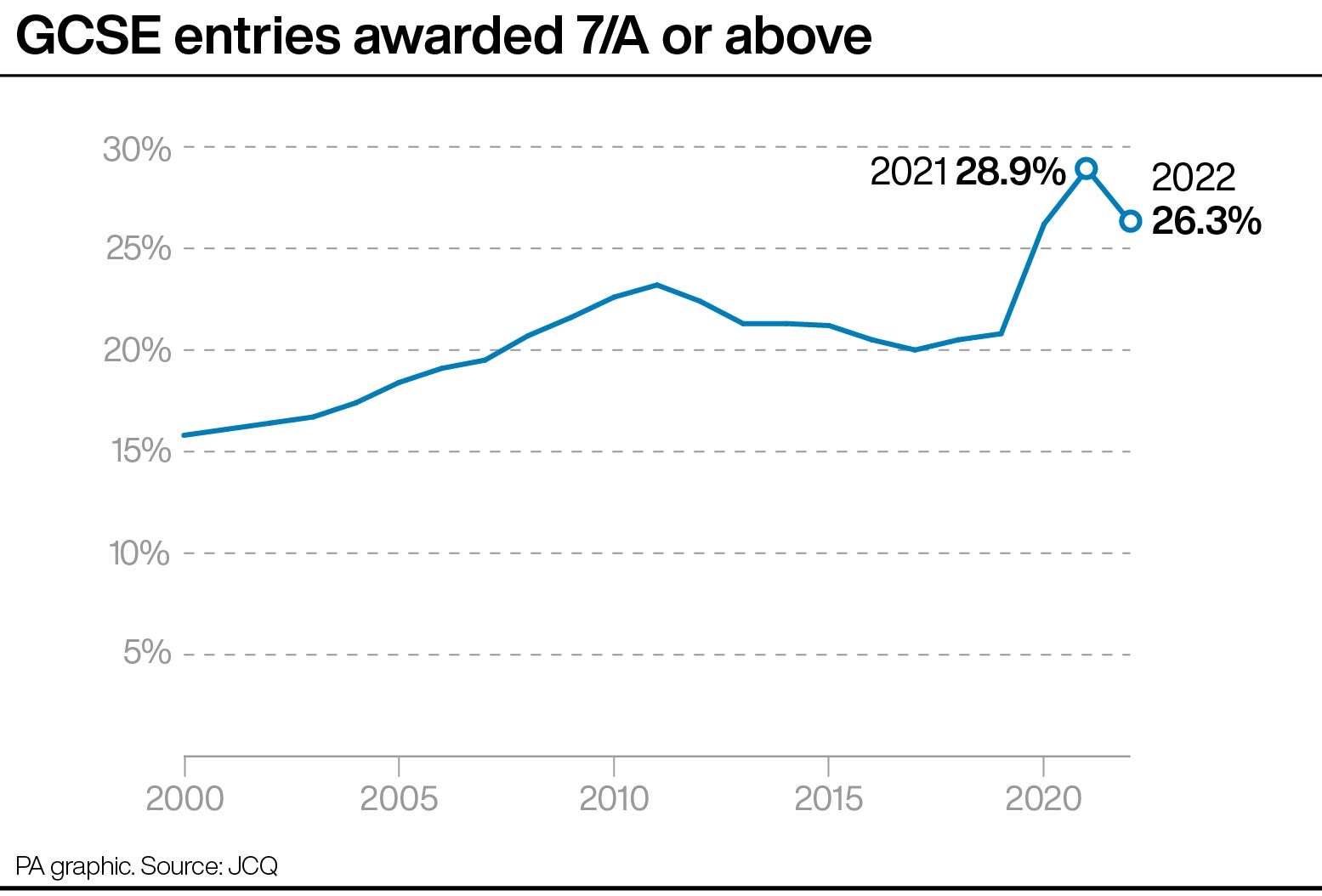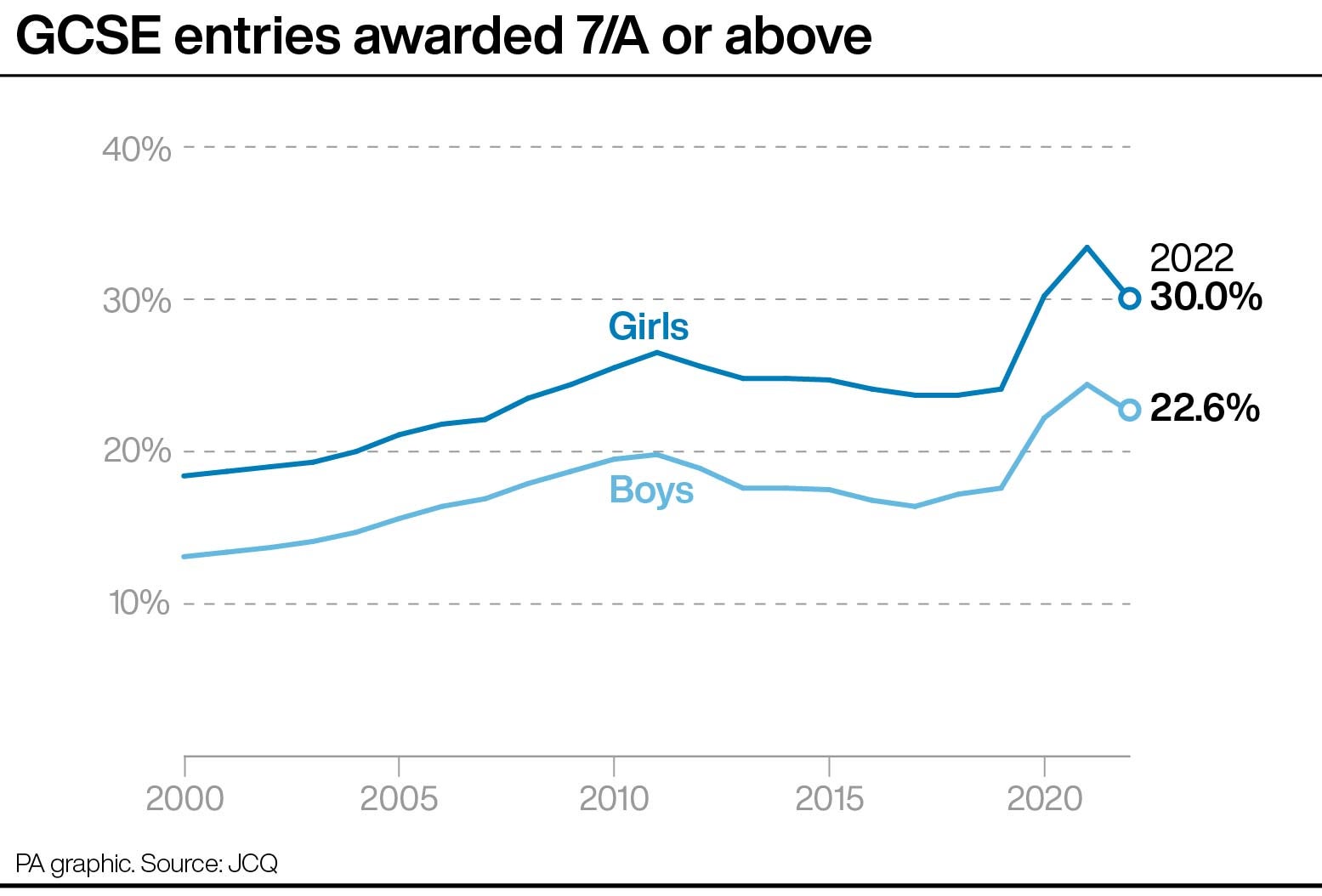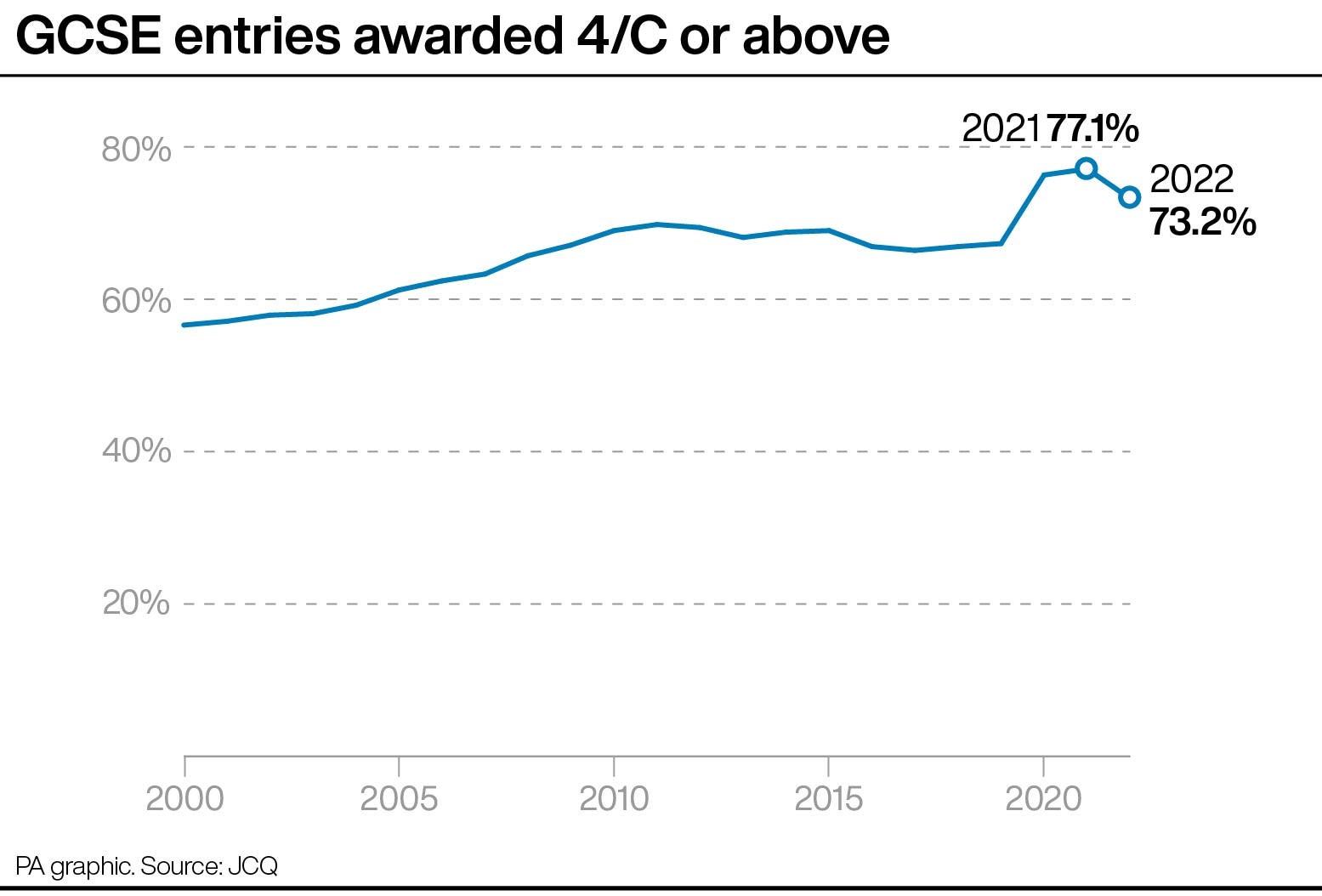
Top grades for GCSEs are down on last year – but remain higher than pre-pandemic levels, as UK students receive their results.
Here are the main figures for this year’s results:
– The proportion of candidates receiving the highest grades has fallen from last year, but is higher than before the Covid-19 pandemic. A total of 26.3% of entries were awarded 7/A or above, down from 28.9% in 2021 but up from 20.8% in 2019.

– Some 73.2% of entries received a 4/C grade or above. This is down from 77.1% last year, but higher than 67.3% in 2019.
– The overall rate for grades 1/G or above is 98.4%, down from 99.0% in 2021 but slightly above 98.3% in 2019.
– The lead enjoyed by girls over boys for the top grades has narrowed. The proportion of female entries awarded 7/A or above was 30.0%, 7.4 percentage points higher than male entries (22.6%). Last year, girls led boys by 9.0 percentage points (33.4% girls, 24.4% boys).

– The gap at grade 4/C has narrowed for the fifth year in a row. A total of 76.7% of female entries were awarded 4/C or higher, compared with 69.8% for boys, a lead of 6.9 points. Last year the gap was 7.0 points.
– The most popular subject in terms of entries this year was science double award, with a total of 904,012 entries, up 0.9% on 2021.
– Maths remains the second most popular subject, with 782,783 entries, down 3.5% on 2021.

– Business studies saw the biggest percentage rise in entries of any major subject, jumping by 4.6% from 102,542 to 107,283.
– After maths, the major subject with the largest percentage fall in entries was English, down by 3.0% from 780,231 to 756,462.
– Overall, there were a total of 5,708,871 GCSE entries, down slightly (by 0.6%) on last year’s figure of 5,745,945.
– A total of 2,193 16-year-olds in England taking at least seven GCSEs achieved a grade 9 in all their subjects. This is down from 3,606 in 2021.







